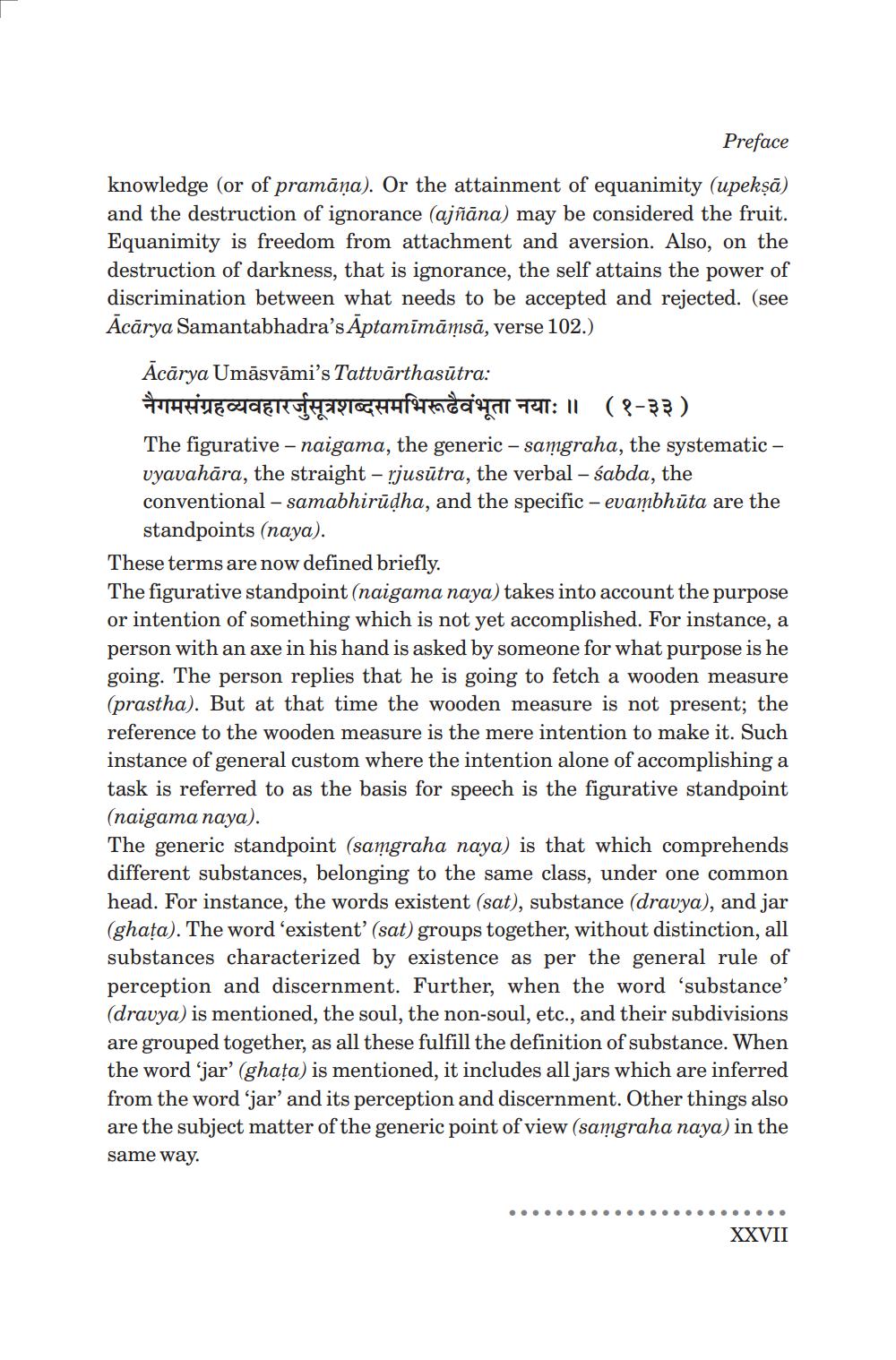________________ Preface knowledge (or of pramana). Or the attainment of equanimity (upeksa) and the destruction of ignorance (ajnana) may be considered the fruit. Equanimity is freedom from attachment and aversion. Also, on the destruction of darkness, that is ignorance, the self attains the power of discrimination between what needs to be accepted and rejected. (see Acarya Samantabhadra's Aptamimansa, verse 102.) Acarya Umasvami's Tattvarthasutra: नैगमसंग्रहव्यवहार सूत्रशब्दसमभिरूद्वैवंभूता नयाः॥ (1-33) The figurative - naigama, the generic - samgraha, the systematic - vyavahara, the straight - rjusutra, the verbal - sabda, the conventional - samabhirudha, and the specific - evambhuta are the standpoints (naya). These terms are now defined briefly. The figurative standpoint (naigama naya) takes into account the purpose or intention of something which is not yet accomplished. For instance, a person with an axe in his hand is asked by someone for what purpose is he going. The person replies that he is going to fetch a wooden measure (prastha). But at that time the wooden measure is not present; the reference to the wooden measure is the mere intention to make it. Such instance of general custom where the intention alone of accomplishing a task is referred to as the basis for speech is the figurative standpoint (naigama naya). The generic standpoint (samgraha naya) is that which comprehends different substances, belonging to the same class, under one common head. For instance, the words existent (sat), substance (dravya), and jar (ghata). The word 'existent' (sat) groups together, without distinction, all substances characterized by existence as per the general rule of perception and discernment. Further, when the word 'substance' (dravya) is mentioned, the soul, the non-soul, etc., and their subdivisions are grouped together, as all these fulfill the definition of substance. When the word 'jar' (ghata) is mentioned, it includes all jars which are inferred from the word 'jar' and its perception and discernment. Other things also are the subject matter of the generic point of view (samgraha naya) in the same way. . . . . . . . . . .. . . . . . .




